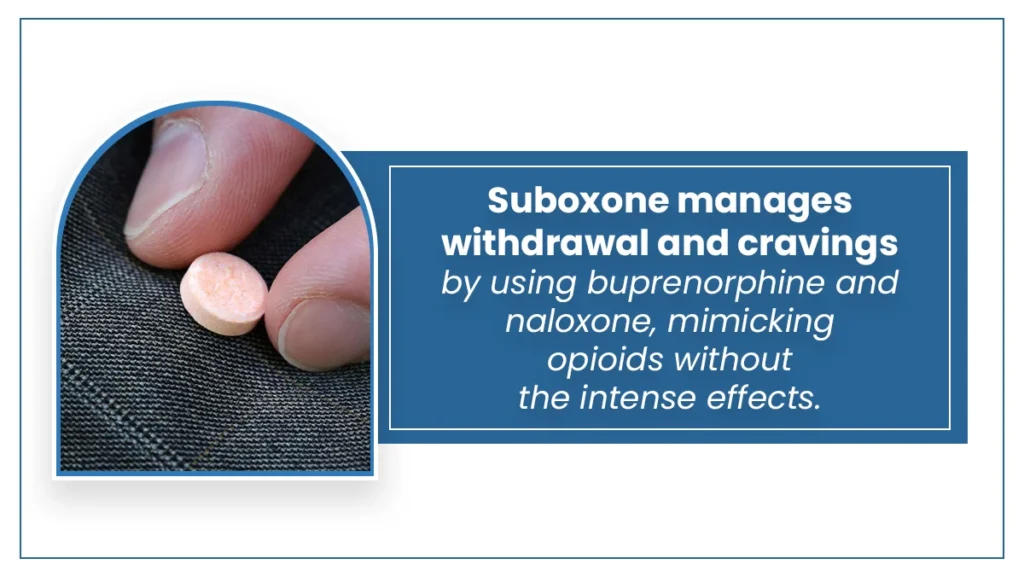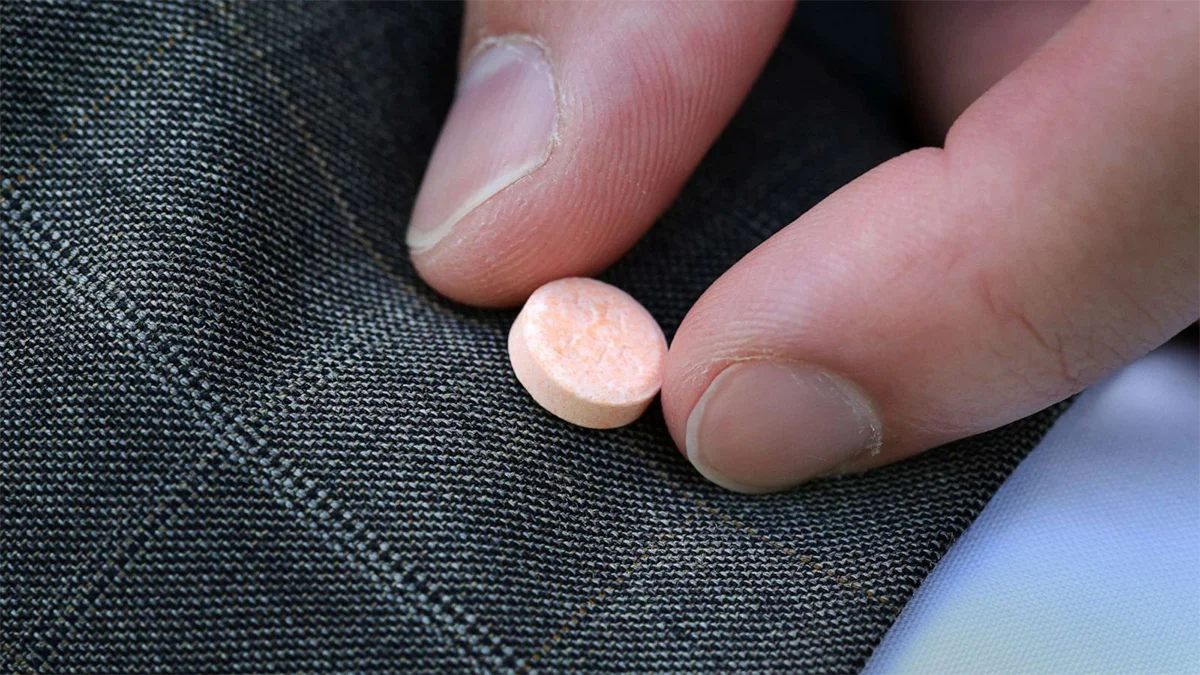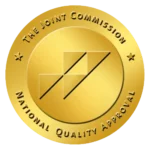Suboxone Treatment Program: A Holistic Healing Approach
Suboxone treatment is a medical approach that uses a medication called Suboxone to help people recover from opioid addiction. Suboxone combines two medicines, buprenorphine and naloxone, to ease withdrawal symptoms and cravings. It is part of a comprehensive treatment plan to enhance recovery outcomes.
In this article, we’ll delve into the Suboxone treatment program, offering insights into how it operates, its structure, and the advantages and potential risks it carries. Understanding these aspects can help individuals and their families make informed decisions about whether this treatment option is right for their recovery.
Key Takeaways
Suboxone treatment aids opioid addiction by blending medication and therapy for comprehensive recovery. Here is what this article covers:
- Suboxone manages withdrawal and cravings by using buprenorphine and naloxone, mimicking opioids without the intense effects.
- This addiction treatment program progresses through assessment, stabilization, and maintenance phases to support individuals on their recovery journey.
- Suboxone offers relief from withdrawal and curbs cravings, yet it carries risks like side effects and potential misuse.
The Haven Detox-Little Rock can help you overcome substance abuse disorders. Contact us at (501) 271-3342 for information about our treatment services.
Suboxone Treatment Program
The Suboxone treatment program is a structured approach used to manage opioid dependence and addiction. It revolves around Suboxone, a prescription medication designed to assist those struggling with an addiction to opioids like prescription painkillers or heroin.
Suboxone combines two main components: buprenorphine and naloxone. These elements work together to alleviate opioid withdrawal symptoms and cravings. These elements help individuals focus on their recovery journey.
This program combines Suboxone with counseling and therapy sessions. It’s structured to support individuals in overcoming addiction by addressing the physical and psychological aspects of dependency. Under medical supervision, Suboxone is administered to reduce the desire for opioids and manage withdrawal symptoms, while counseling aids in understanding triggers and developing coping strategies.
The goal is long-term recovery and a return to a fulfilling life without dependency on opioids. The Suboxone program aims to provide holistic support, combining medication and therapy to empower individuals in their path to recovery.
Suboxone’s Role in Overcoming Opioid Addiction
Suboxone is a part of medication-assisted treatment (MAT), used in combination with counseling and therapy to provide a comprehensive approach to opioid addiction treatment.
Active Ingredients of Suboxone
Suboxone is composed of two active ingredients: Buprenorphine and naloxone.
Buprenorphine is a partial opioid agonist. Buprenorphine attaches to the same receptors in the brain that opioid drugs bind to but produces a weaker effect. As a result, it can help manage cravings and symptoms of opioid withdrawal without producing the intense euphoria associated with full opioid agonists like heroin or prescription painkillers.
Naloxone is an opioid antagonist. Naloxone blocks the effects of opioids. It is included in Suboxone to deter misuse. If someone were to try to misuse Suboxone by injecting it, the naloxone component would become active and block the effects of buprenorphine. This discourages intravenous use, reducing the potential for abuse.
How Suboxone Works

Here’s how Suboxone works to counteract opioid dependence:
Minimizing Symptoms of Withdrawal: Buprenorphine helps manage withdrawal symptoms without causing the intense high associated with full opioid agonists, allowing individuals to taper off opioids more comfortably.
Suppresses Cravings: By occupying the opioid receptors in the brain, buprenorphine helps reduce the intense cravings for opioids, allowing individuals in treatment to focus on recovery without constantly battling the overwhelming desire for opioids.
Blocking Effects of Other Opioids: Due to its partial agonist properties, Suboxone can occupy the opioid receptors, making it harder for other opioids to bind effectively. This reduces the euphoric effects of other opioids and can prevent opioid overdose.
Overall, Suboxone is part of a comprehensive treatment strategy for opioid use disorder (OUD). When used as prescribed and as part of a structured treatment program, it can help individuals manage withdrawal, reduce cravings, and work towards sustained recovery from opioid dependence.
Structure of Suboxone Treatment
The suboxone treatment program is structured in three essential phases, each playing a vital role in supporting individuals on their journey to overcome opioid addiction.
Initial Assessment and Induction Phase
Assessment: This phase involves a comprehensive evaluation of the individual’s medical history, substance use, mental health, and other relevant factors. The medical provider determines the appropriate dosage of Suboxone and develops a personalized treatment plan.
Induction: This is the initial phase of Suboxone treatment, during which the medication is administered. It often begins when the individual is experiencing mild to moderate withdrawal symptoms. The first dose is typically dispensed under medical supervision to ensure safety and effectiveness.
Stabilization Phase
Adjustment of Dosage: In this phase, medical professionals continue to monitor the individual’s response to Suboxone and adjust the dosage as needed to achieve the right balance. The goal is to minimize withdrawal symptoms and cravings while avoiding adverse side effects of overmedication.
Counseling and Therapy: While taking Suboxone, the individual participates in counseling, behavioral therapy, or support groups to address the psychological and behavioral aspects of addiction. These sessions teach coping strategies, identify triggers, and help the patient make necessary lifestyle changes.
Maintenance Phase
Long-Term Treatment: Once stabilization is achieved, the maintenance phase begins. During this phase, the individual continues on a steady dose of Suboxone, which can vary depending on their progress and individual needs.
Ongoing Support: Counseling, individual and group therapy, and support groups remain an integral part of the maintenance phase to prevent relapse and support the individual in maintaining sobriety. Regular check-ins with healthcare providers, such as doctors, physicians, or counselors, help monitor progress and make any necessary adjustments to the treatment plan.
Throughout these phases, the Suboxone treatment program aims to support individuals in managing their addiction, promoting recovery, and enhancing their overall well-being.
Benefits and Risks of Suboxone Treatment
Suboxone offers several benefits in treating opioid addiction, but like any opioid medication, it also poses potential side effects and risks. Let’s take a look:
Benefits of Suboxone
Reduction of Withdrawal Symptoms: Suboxone helps manage and alleviate the discomfort of opioid withdrawal, making the drug detoxification process more manageable.
Craving Reduction: It diminishes cravings for opioids, making it easier for individuals to focus on recovery without constantly battling the urge to use opioids.
Lower Risk of Overdose: Suboxone has a ceiling effect, meaning that after a certain dose, increasing the amount does not result in increased opioid effects. This can result in a lower risk of overdose compared to full opioid agonists.
Reduced Euphoric Effects: Suboxone’s buprenorphine component blocks other opioids from attaching strongly to receptors, diminishing the “high” associated with opioid use.
Legal Access and Supervised Use: Its availability through prescription and medical supervision ensures a safer and more controlled approach to managing opioid addiction.
Side Effects and Risks of Suboxone
Dependency: While Suboxone is used to treat opioid dependency, it can also lead to dependence itself if not taken as prescribed. Tapering off should be done gradually under medical guidance.
Risk of Misuse: Some individuals might misuse Suboxone by attempting to enhance its effects, especially by trying to bypass the naloxone component. This can lead to severe withdrawal symptoms.
Side Effects: Common side effects include headaches, constipation, nausea, insomnia, sweating, and anxiety. These adverse effects are typically milder and tend to decrease over time.
Interaction with Other Drugs: Suboxone can interact with certain medications, particularly central nervous system depressants like benzodiazepines and alcohol, leading to an increased risk of respiratory depression and other health complications.
Pregnancy Considerations: Suboxone use during pregnancy should be carefully managed due to potential risks to the fetus, although in some cases, the benefits may outweigh the risks under close medical supervision.
By weighing the benefits against the risks and being vigilant about its usage, individuals can maximize the advantages of Suboxone in their journey toward recovery.
Frequently Asked Questions (FAQ)
What is Suboxone therapy?
Suboxone therapy involves using Suboxone, containing buprenorphine and naloxone, in combination with counseling and therapy for the treatment of opioid dependence.
What do doctors prescribe Suboxone for?
Doctors prescribe Suboxone to help treat opioid and opiate addiction. It assists in managing withdrawal symptoms and reducing cravings, supporting individuals in overcoming addiction.
What is MAT treatment?
MAT, or medication-assisted treatment, involves the use of medications, such as methadone, with counseling and therapy to treat substance use disorders (SUDs). It helps reduce cravings and supports recovery.
The Haven Detox-Little Rock: Leading Your Way to Wellness
Struggling with opioid addiction can feel overwhelming, but hope is available at The Haven Detox-Little Rock.
Our effective treatment starts with medical detox, ridding your body of toxins and setting the stage for further care. Moving into residential treatment, we equip you with tools for lasting recovery through therapy, medical support, and self-reflection.
At our treatment center, our medical staff also offers mental health services for those dealing with mental illness.
Don’t wait to take this step towards reclaiming your life. Reach out to us at (501) 271-3342. Our compassionate team is ready to guide you through this transformative process.





